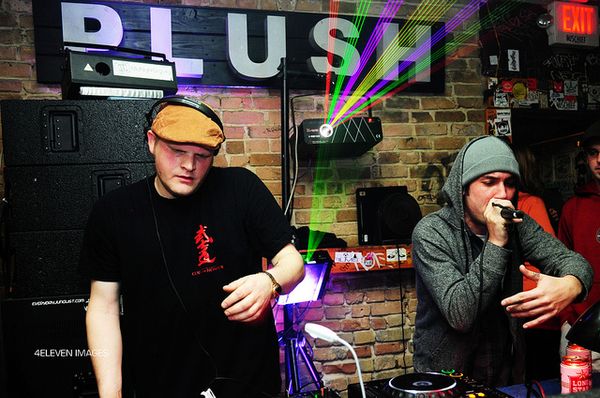Tunes in Motion: Stacking for Vibrant Drum & Bass
In the realm in electronic music, few styles capture the pure energy as well as deep textures as drum and bass. Being a producer navigating through this vibrant and challenging environment, finding one's distinct identity can be both thrilling and intimidating. With countless musicians vying for recognition, the challenge isn't just to create engaging soundscapes but also to distinguish your work from the sea of talented individuals out there. This article will delve into various subtleties of dnb production, highlighting key methods, resources, and insights to help one succeed in an constantly changing landscape.
Beginning with understanding the genre's historical roots to mastering its intricate art of designing sounds, we will investigate crucial components that every dnb creator should know. Whether just starting or looking to elevate your craft to the next level, we will cover all aspects of the essentials in the mixing process and mastering as well as common mistakes to steer clear of. Accompany us in our journey to reveal strategies that can enhance one's productions, enabling you to be distinctive and make a lasting impact in the dynamic domain of drum and bass music.
Shine as a Drum and Bass Producer
In a crowded drum and bass scene, discovering your unique sound is essential to making a memorable impression. Exploration is vital; never hesitate to mix different genres or incorporate unconventional elements into your tracks. This not only highlights your creativity but also helps in cultivating a distinctive style that sets you apart from the rest. Regardless of whether it's through innovative rhythms, unexpected sound designs, or poignant song themes, stretching boundaries can attract listeners looking for something fresh.
Moreover, networking within the DnB community can significantly enhance your exposure. Team up with other producers, attend events, and engage on social media platforms to make contacts that could lead to new possibilities. Building relationships with fellow artists, DJs, and fans can create pathways to collaborations that enhance your music and broaden your reach. Keep in mind, the community thrives on support and collaboration, and being proactive can help you achieve recognition.
Last but not least, marketing yourself effectively is just as important as creating great music. Make use of platforms such as SoundCloud, Bandcamp, and social media to distribute your works and engage with your audience. Create eye-catching content that represents your musical brand, and never underestimate the power of a consistent release schedule. When listeners know they can expect quality tracks from you consistently, they are more likely to follow your journey and support your growth as a DnB producer.
Essential Tools for Drum and Bass Production
To produce vibrant drum and bass tracks, producers need a strong base of tools that can improve their creativity and workflow. A top-notch Digital Audio Workstation (DAW) is necessary, with frequent choices like Ableton Live, FL Studio, and Logic Pro. Each DAW features special capabilities that can cater to various production styles, so picking one that fits your creative process is vital. The right DAW not only simplifies the workflow but also provides quick access to a wide array of plugins and virtual instruments.
In addition to a powerful DAW, an collection of VST plugins can greatly enhance your sound design capabilities. Some of the best VSTs every drum and bass producer should explore are Serum for producing rich , evolving synths, Massive for thick basses and leads, and Kontakt for sampling high-quality instruments. These tools facilitate an extensive scope of sonic experimentation, which is essential in developing a signature sound that is unique in a crowded field. Furthermore, having quality effects plugins such as reverb, delay, and compression can improve your mixes and add dimension to your tracks.
Another crucial aspect of DnB production is having the right hardware. A reliable MIDI controller can enhance your workflow by offering direct control over your virtual instruments. Additionally, high-quality studio monitors and headphones are crucial for accurate sound reproduction during mixing and mastering. Building an optimized studio workspace with these key tools will help you keep on track and inspired, consequently leading to more polished and artistic drum and bass productions.
Blending and Finalizing Advice for DnB Tracks

Achieving a harmonized mix in DnB demands meticulous focus to levels and frequency placement. Start by making sure that your kick and snare sit clearly in the mix, as these are the driving forces behind the genre. Use EQ to create space for each element, ensuring the low-end do not interfere with your kick drum. Using high-pass filters can help clean up muddiness, particularly in the mid frequencies, while maintaining your sub and basslines powerful without overwhelming other elements.
Once you have a strong mix, it's time to focus on mastering. The goal is to boost the overall volume and definition of your track without compromising its dynamic range. Use a combination of compression and limiters to achieve a crisp sound. see this is to use multiband compression to focus on specific frequency ranges, emphasizing the low-end while maintaining clarity in the high frequencies. Additionally, compare look at this now against industry-standard mastered DnB tracks to ensure your loudness and tonal balance are in line with industry standards.
In conclusion, don’t overlook the significance of room in your mix. Use reverb and time-based effects intentionally to introduce depth and texture to your sounds without cluttering the mix. This is particularly crucial for atmospheric elements that are common in DnB. Be certain to program these effects to build movement and excitement throughout your track. Paying attention to these details during the mixing process and the final process will help your DnB songs shine in a crowded landscape.